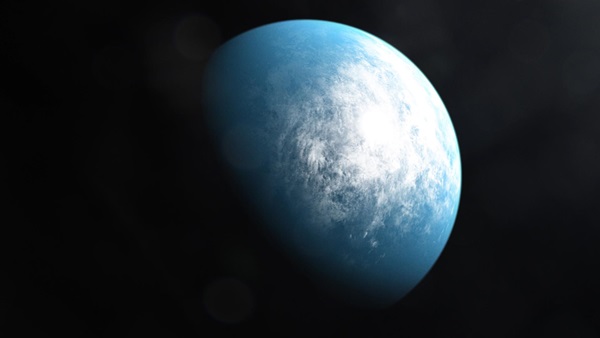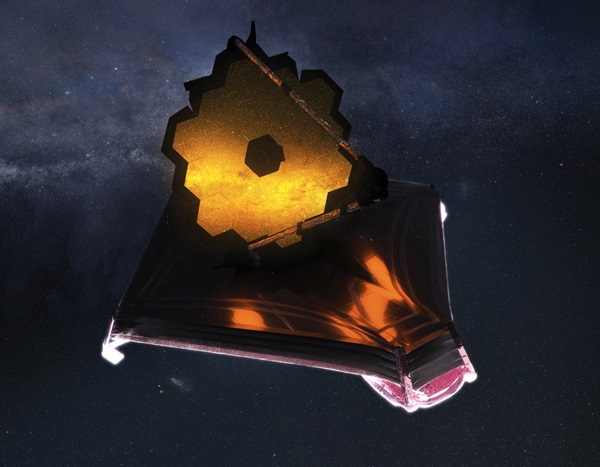Discovery of Two Exoplanets in Orbit Around Distant Star, Potentially Habitable
With over 5,000 recognized exoplanets, astronomers are transitioning their attention from mere discoveries to pinpointing those that stand out as promising candidates for in-depth exploration.

NASA’s Goddard Space Flight Center
Recently, NASA unveiled the identification of a novel Earth-sized planet located within the habitable zone of the nearby star TOI-700. As leaders in the discovery of this planet, known as TOI-700 e, we note its position just over 100 light-years away from Earth, making it beyond the reach of human exploration. Nevertheless, our understanding indicates that TOI-700 e shares similarities with Earth in size, likely featuring a rocky composition and the potential to harbor life.
In the TOI-700 star system, TOI-700 e is one of two potentially habitable planets. Habitable planets are characterized by their optimal distance from their star, enabling a surface temperature conducive to sustaining liquid water. While the excitement surrounding the discovery of potentially habitable planets persists, the landscape of exoplanet research is evolving. Rather than solely expanding the roster of discovered planets, researchers are now directing their efforts toward identifying and studying systems with the greatest potential to answer fundamental questions about planetary formation, evolution, and the potential existence of life in the universe.
TOI-700 e distinguishes itself among numerous planet discoveries due to its suitability for future studies, positioning it as a key player in unraveling significant inquiries about the conditions for life beyond our solar system.
From 1 to 5,000
In 1995, astronomers achieved a groundbreaking milestone with the discovery of the first exoplanet around a Sun-like star. Since then, the realm of exoplanet exploration and research has undergone rapid and continuous evolution.
Initially, astronomers identified only a handful of exoplanets annually. However, the synergy of advanced facilities dedicated to exoplanet science, coupled with enhanced detection sensitivity, has led to the annual discovery of hundreds of exoplanets. The refinement of detection methods and tools has significantly expanded the knowledge base about these celestial bodies. Over the past three decades, scientists have progressed from the initial challenge of detecting exoplanets to characterizing crucial chemical indicators in their atmospheres, such as water, with instruments like the James Webb Space Telescope.
Presently, the count of known exoplanets exceeds 5,000, encompassing a diverse range from gas giants to compact rocky worlds. Particularly exciting is the identification of approximately a dozen exoplanets that likely consist of rocky compositions and orbit within the habitable zones of their respective stars.
Astronomers have not only identified individual planets but have also uncovered systems like TOI-700, where more than one planet orbits within the habitable zone of their star. These unique configurations are aptly termed keystone systems, marking remarkable milestones in our exploration of the cosmos.

NASA’s Goddard Space Flight Center
A pair of habitable siblings
TOI-700 gained initial prominence when our team unveiled the discovery of three compact planets encircling the star in early 2020. Employing data from NASA’s Transiting Exoplanet Surveying Satellite mission and the Spitzer Space Telescope, we detected these planets by monitoring slight reductions in the starlight emitted by TOI-700. These dimming episodes occur as the planets traverse in front of the modest, cool, red dwarf star situated at the center of the system.
Through precise measurements of the light variations, we confirmed the presence of at least three small planets in the TOI-700 system, with indications hinting at a potential fourth. Notably, we determined that the third planet from the star, TOI-700 d, occupies the habitable zone, where surface temperatures could support the existence of liquid water.
Continuing observations of TOI-700 by the Transiting Exoplanet Surveying Satellite from July 2020 to May 2021 allowed our team to identify the fourth planet, TOI-700 e. Surprisingly, TOI-700 e, with a size 95 percent that of Earth, orbits the inner edge of the star’s habitable zone, positioned between planets c and d. This discovery positions TOI-700 among the select few systems known to harbor two Earth-sized planets within the habitable zone of their star. Furthermore, its relatively close proximity to Earth renders TOI-700 one of the more accessible systems for future characterization efforts.

Bricktop/Wikimedia Commons
The bigger questions and tools to answer them
With the successful deployment of the James Webb Space Telescope, astronomers are now equipped to delve into characterizing the atmospheric chemistry of exoplanets, seeking potential clues about the existence of life. In the imminent future, large ground-based telescopes will also contribute to unveiling additional insights into the composition of planets situated beyond our solar system.
Despite the capabilities of these advanced telescopes, extracting sufficient light to discern intricate details necessitates prolonged observation of a specific system. Faced with a myriad of scientific inquiries, astronomers must strategically determine where to focus their attention. This forms the core objective of our team: identifying the most intriguing and promising exoplanets for examination using the Webb telescope and forthcoming facilities.
Currently, Earth serves as the sole data point in the quest for extraterrestrial life. While the possibility exists that alien life could differ markedly from our understanding, locations resembling Earth—harboring liquid water on the surface—offer a promising starting point. Keystone systems boasting multiple planets deemed viable for hosting life, such as TOI-700, are considered prime candidates for concentrated observation. Through in-depth scrutiny of TOI-700, our team aims to enhance our understanding of habitability factors, the formation and evolution of rocky planets akin to Earth, and the mechanisms shaping solar systems. The more astronomers comprehend the workings of star systems like TOI-700 and our own solar system, the greater the likelihood of identifying signs of life within the vast cosmos.
This article is republished from AstronomyCom under a Creative Commons license. Read the original article.
Do not forget to share your opinion with us to provide you with the best posts !




0 Comments